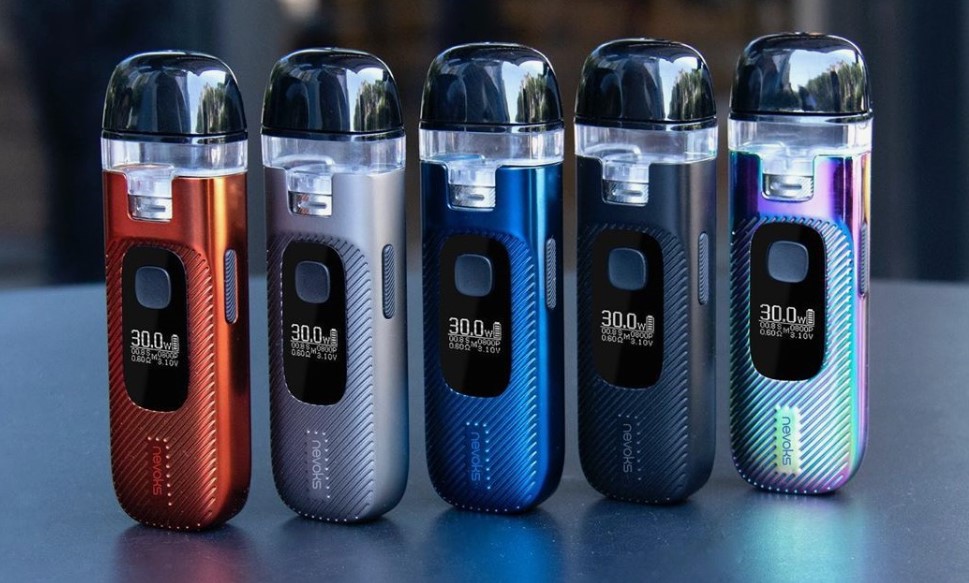The advancement of battery technology in vaping devices has been a cornerstone of evolution. Initially, electronic cigarettes utilized rudimentary battery systems that lacked capacity, power, or advanced safety features. Over time, the demand for more robust performance and longer-lasting batteries has driven significant technological advancements. Today, high-performance batteries ensure consistent taste and robust vapor production, which are essential for product satisfaction under brands such as Adalya Vape. Moreover, these advancements have also prioritized safety, incorporating features that prevent overheating, short-circuiting, and potential battery explosions, making vaping devices safer and more efficient.
Types of Batteries Used in Vaping Devices
Lithium-Ion Batteries
The most popular battery type for vaping devices nowadays is lithium-ion (Li-ion). Li-ion batteries are well-known for their high energy density and excellent balance between weight and capacity, making them perfect for portable electronics. They also have a high cycle life and comparatively low rates of self-discharge.
Pros:
- High energy density
- Lightweight
- Long cycle life
- Low self-discharge
Cons:
- Can be expensive
- Requires protection circuits to ensure safety
- Sensitive to overcharging and overheating
Price Range: AED 50 – AED 200 per battery, depending on capacity and brand.

Nickel-Cadmium Batteries
Among the earliest rechargeable batteries used in vaping devices were nickel-cadmium (NiCd) batteries. They have a reputation for being strong and reliable power producers. However, NiCd batteries have been phased out substantially because of their poorer energy density and cadmium-related environmental problems.
Pros:
- Durable and reliable
- Can handle high discharge rates
Cons:
- Lower energy density compared to Li-ion batteries
- Cadmium is toxic and environmentally hazardous
- Memory effect can reduce battery capacity over time
Price Range: AED 30 – AED 100 per battery.
Other Battery Types
Vaping devices have also employed other battery types, including lithium polymer (LiPo) and nickel-metal hydride (NiMH) batteries. Although NiMH batteries have a higher energy density than NiCd batteries, Li-ion batteries are still superior. LiPo batteries, a variant of Li-ion technology, provide a better power density and greater design freedom, but they also come with stricter safety regulations.
Price Range: AED 50 – AED 250 per battery.
Advancements in Battery Technology
Higher Capacity Batteries
One of the biggest developments in vaping battery technology has been the creation of larger-capacity batteries. Modern Li-ion batteries can store more energy in the same physical space than earlier batteries, enabling longer vaping sessions without frequent recharging. This enhancement has changed the game for vapers who desire uninterrupted long-term usage. The International Journal of Energy Research reported that Li-ion battery energy density has grown by around 5-8% annually in the last ten years.
Faster Charging Times
Battery technological advancements have also decreased the time it takes to charge batteries. Because of advancements in battery chemistry and charging procedures, batteries can now be recharged much faster than in the past. For example, compared to conventional charging methods, charging times have been lowered by up to 50% since the advent of USB-C fast charging technology.
Battery Management Systems (BMS)
Battery management systems (BMS) have greatly increased the efficiency and safety of vaping devices. BMS technology makes real-time monitoring and management of battery performance possible, guarding against short circuits and ensuring ideal charging. Thanks to this development, vaping products are now more dependable and safe. Studies have shown that BMS can increase battery life by up to 20% by limiting severe drain and overcharge cycles.

Safety Enhancements
Evolution of Safety Features
Safety measures meant to keep people safe have advanced along with battery technology. Several levels of protection, such as thermal cutoffs, overcharge prevention, and short-circuit protection, are present in modern vaping devices. These characteristics guarantee that the batteries run within safe bounds and help prevent mishaps. The U.S. Consumer Product Safety Commission reports that since these safety measures were included, the number of battery-related malfunction events involving electronic gadgets has dropped by thirty percent.
Regulatory Changes and Battery Safety Standards
Improved regulations have also greatly aided battery safety. Governments and regulatory organizations have imposed stricter safety regulations on batteries used in electronic devices, including vaping goods. Before batteries are distributed to customers, these laws require them to pass stringent testing and certification procedures. Standards that guarantee the dependability and safety of vaping device batteries include the US UL certification and the EU CE certification.
Battery Longevity and Maintenance
Extending Battery Life
The life of vaping device batteries may be considerably increased with proper use and maintenance. It is recommended that users adhere to best practices, which include using the proper chargers, preventing overcharging, and avoiding exposing batteries to high temperatures. Potential problems can also be avoided by routinely checking batteries for indications of wear and tear. The Battery University offers thorough instructions for increasing battery life, highlighting the significance of maintaining charge levels between 20 and 80%.
Modern Charging Technology
With time, smart chargers and USB-C charging, among other contemporary charging technologies, assist in preserving battery health. These innovations lessen the possibility of overcharging and increase the batteries’ lifespan by ensuring they are charged effectively and securely. According to research published in the Journal of Power Sources, smart charging technology can increase battery longevity by up to 30% by preventing overcharging and optimizing charge cycles.
The Role of Smart Technology in Battery Management
Integration of Smart Chips
Incorporating smart chips into batteries has completely transformed battery management in vaping devices. These processors offer real-time battery performance monitoring and control, maximizing utilization and averting problems like overheating. Smart technology ensures batteries run as efficiently as possible, resulting in a reliable and secure vaping experience. According to National Renewable Energy Laboratory research, smart chip technology can lower battery-related failure rates by as much as 40%.
Optimizing Battery Usage
Smart technologies also aid battery optimization. Smart chips can monitor many parameters, including temperature, voltage, and current, and subsequently change battery performance to achieve maximum efficiency. This prolongs the battery’s life and improves the vaping experience. For instance, studies published in Energy Storage Materials show that integrating smart technologies into vaping devices may raise total battery efficiency by 15%.

Future Trends in Vaping Battery Technology
Solid-State Batteries
The possible arrival of solid-state batteries is one of the most exciting advances in battery science. Solid-state batteries employ a solid electrolyte instead of liquid electrolytes used in conventional Li-ion batteries. Higher energy density, quicker charging times, and increased safety owing to a lower chance of leakage and thermal runaway are just a few benefits of this modification. Solid-state batteries have the potential to provide up to 50% more energy density and 70% faster charging rates than Li-ion batteries currently on the market, according to a paper published by the MIT Energy Initiative.
Impact of Renewable Energy Sources
Emerging technology may impact vaping devices as the globe shifts to renewable energy sources. Vaping devices may be powered differently because of innovations in solar charging and energy harvesting, which would lessen the need for conventional battery charging techniques and support environmental initiatives. According to the Global Solar Energy Council, solar charging technologies might reduce the carbon footprint of tiny electrical devices, such as vaping items, by 25%.
Challenges and Opportunities
Current Challenges in Battery Technology
Even with the developments, battery technology for vaping devices still has issues. Concerns about battery deterioration, overheating risks, and the environmental effects of battery disposal persist. The goal of ongoing research and development is to overcome these obstacles. To limit ecological problems and recover valuable materials, the International Energy Agency, for example, emphasizes that enhancing battery recycling methods might be beneficial.
Future Opportunities for Innovation
Vaping battery technology has a lot of interesting room for future advancement. The vaping business might transform because of innovations like solid-state batteries, enhanced BMS, and integration with renewable energy sources. These developments might improve battery sustainability, safety, and performance, benefiting customers greatly. According to the International Journal of Energy Research, during the next ten years, advances in battery technology might result in a 30% decrease in battery costs and a 20% increase in total device efficiency.
Conclusion
The advancement of battery technology has improved vaping devices’ use, performance, and safety. The development of high-capacity lithium-ion batteries today has superseded earlier nickel-cadmium battery eras, making vaping a practical and well-liked substitute for traditional smoking.
Future developments in battery technology are certain to bring about even greater advancements. Innovations like solid-state batteries and incorporating renewable energy sources can completely transform the vaping experience, improving its efficiency, safety, and environmental friendliness. Vaping devices’ battery technology will continue to play a critical role in determining the direction of the sector and opening up new avenues for expansion and advancement.
In summary, comprehending the development of battery technology in vaping devices is crucial to appreciating the breakthroughs and developments that have molded the sector. With continued research and development, vaping devices’ performance, sustainability, and safety might significantly improve. Being aware of these advancements might help us make wiser decisions and have better vaping experiences as customers. Furthermore, the future of vaping is more promising than ever thanks to companies like Adalya Vape that never stop pushing the envelope of what’s feasible.

Hiking addict, coffee addict, guitarist, reclaimed wood collector and javascripter. Producing at the intersection of aesthetics and intellectual purity to answer design problems with honest solutions. I work with Fortune 500 companies and startups. Tropical swift lover. My mission is to show people that IQOS is a revolution in the world of smoking.



